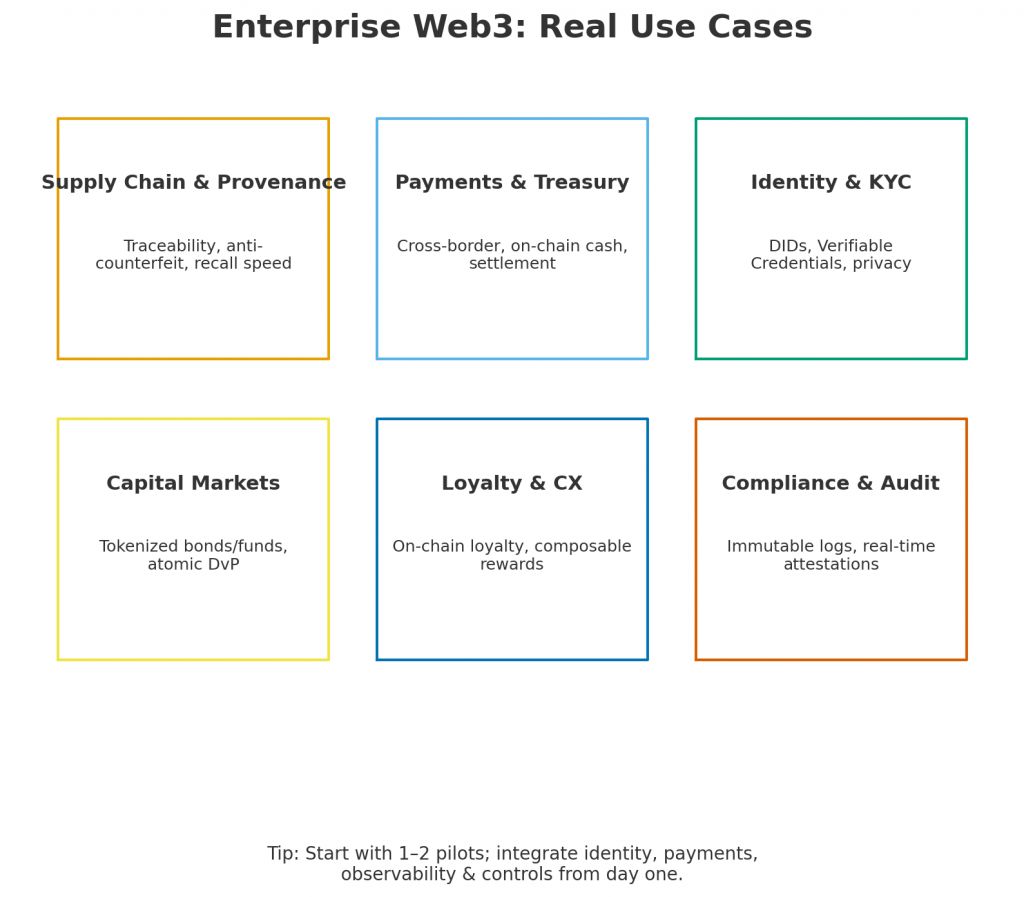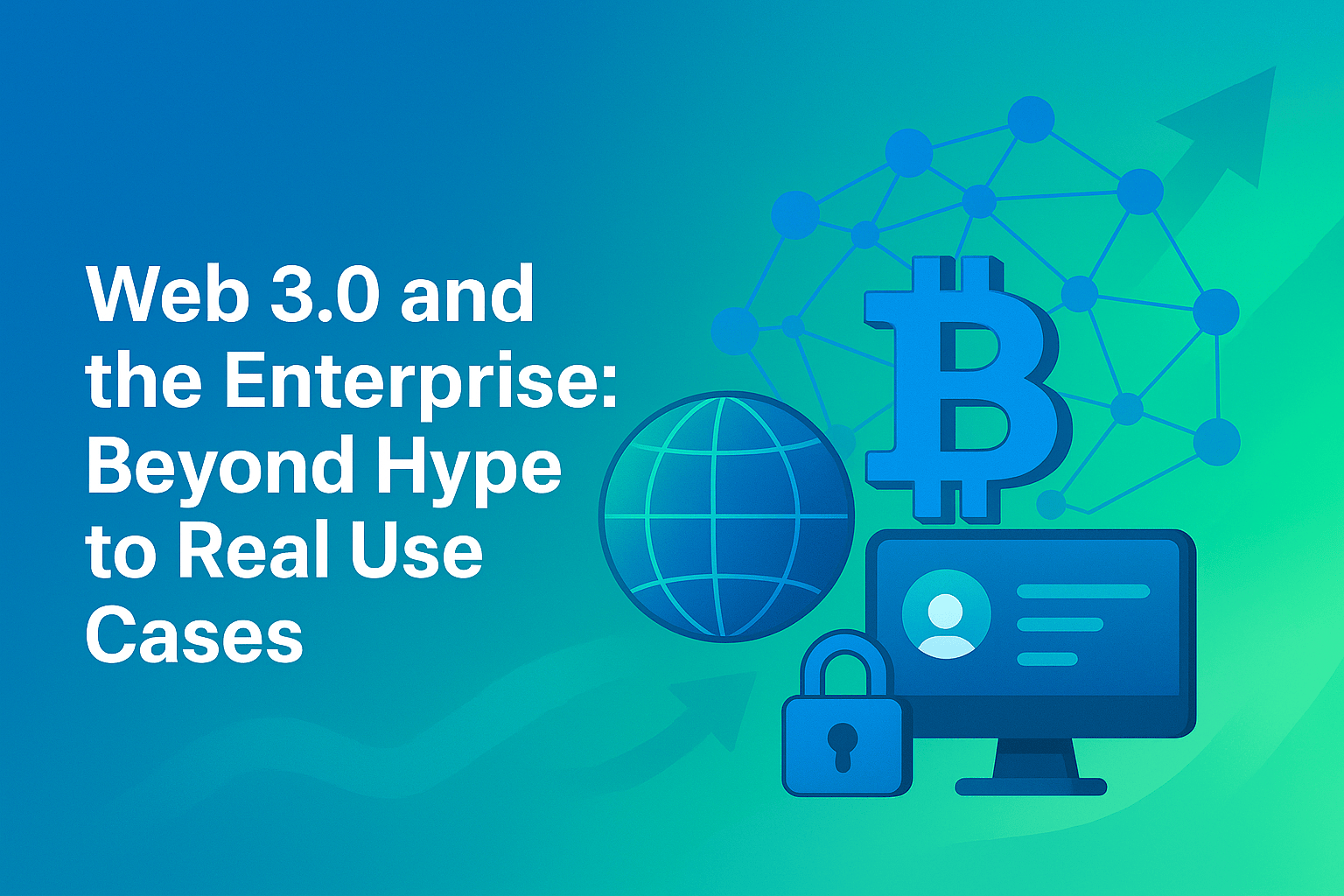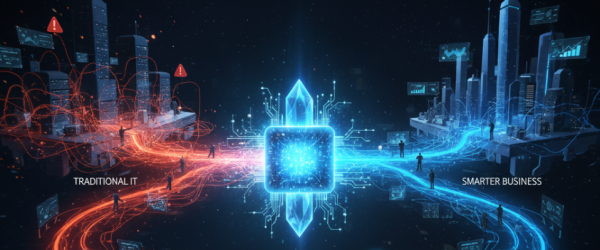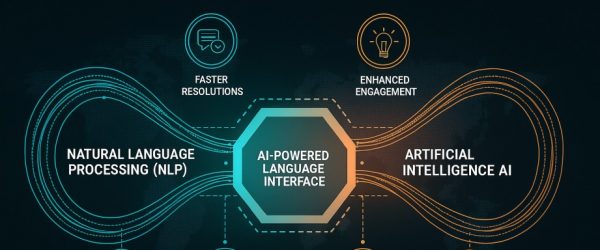Introduction: Moving Beyond the Hype
For years, Web 3.0 has been surrounded by buzzwords like blockchain, decentralization, and metaverse. While the hype has been strong, enterprises are beginning to explore its practical use cases. According to Gartner’s Hype Cycle for Emerging Technologies (2023), Web3 and decentralized identity are moving from peak hype into early adoption phases across industries Gartner.
A 2022 Deloitte survey found that 96% of executives believe blockchain and Web 3.0 will be critical for future business strategies Deloitte. This indicates a shift: from hype to real-world application.
What Web 3.0 Really Means for Enterprises
Web 3.0 isn’t just about cryptocurrencies. It’s the next phase of the internet, blending:
- Decentralization: Data controlled by networks, not central authorities.
- Blockchain: Immutable ledgers ensuring transparency and trust.
- Semantic Web & AI: Machines understanding data contextually for smarter decisions.
- IoT & Interoperability: Connected devices enabling real-time enterprise insights.
For enterprises, Web 3.0 is about data ownership, transparency, automation, and secure collaboration.
Web 2.0 vs Web 3.0 in Enterprises
| Feature | Web 2.0 (Current) | Web 3.0 (Emerging) |
| Data Ownership | Platforms control user data | Users & enterprises own data |
| Trust | Intermediaries (banks, brokers) | Trustless via blockchain |
| Transactions | Manual, third-party verified | Automated via smart contracts |
| Identity | Centralized authentication | Decentralized identity (DID) |
| Enterprise Value | Engagement & digital presence | Security, automation, transparency |
Real Enterprise Use Cases of Web 3.0
- Supply Chain Transparency
Walmart and IBM are using blockchain to track food provenance, reducing product recall times from 7 days to 2.2 seconds IBM. - Decentralized Identity (DID)
Microsoft’s Entra Verified ID is helping enterprises build decentralized identity systems, reducing fraud and improving user control Microsoft. - Finance & Smart Contracts
JPMorgan’s blockchain-based platform Onyx processes billions in daily transactions, eliminating manual reconciliations JPMorgan. - Healthcare Data Security
Web 3.0 enables secure patient data sharing across hospitals while maintaining privacy. The EU is piloting blockchain-based health records European Commission. - Knowledge Management
With semantic web technologies, enterprises can enable AI-driven data discovery across silos, improving R&D and innovation cycles.

Adoption Trends and Statistics
- By 2030, Web 3.0 is projected to reach $81.5 billion in global market value Emergen Research.
- 74% of enterprises are either in exploration or active pilot stages for blockchain-based solutions PwC.
- Enterprise spending on blockchain is expected to hit $19 billion by 2024 IDC.
Challenges Enterprises Face
While promising, adoption is not without hurdles:
- Scalability: Current blockchain networks struggle with enterprise transaction volumes.
- Regulation: Governments worldwide are still defining legal frameworks for Web 3.0.
- Integration Complexity: Legacy IT and Web 3.0 don’t always align easily.
- Talent Gap: 67% of enterprises report difficulty hiring blockchain and Web 3.0 talent WEF.
Conclusion: From Experiments to Mainstream
Web 3.0 in enterprises is no longer just a buzzword. With applications across supply chain, finance, identity, and healthcare, it is slowly transitioning into a business enabler.
While challenges around scalability and regulation remain, early adopters are already seeing measurable benefits in efficiency, security, and trust. For enterprises, the real question isn’t if they should explore Web 3.0, but how soonthey can build capabilities around it.








Your blog has quickly become my go-to source for reliable information and thought-provoking commentary. I’m constantly recommending it to friends and colleagues. Keep up the excellent work!
I do not even know how I ended up here but I thought this post was great I do not know who you are but certainly youre going to a famous blogger if you are not already Cheers
Your blog is a constant source of inspiration for me. Your passion for your subject matter is palpable, and it’s clear that you pour your heart and soul into every post. Keep up the incredible work!
Your blog is a constant source of inspiration for me. Your passion for your subject matter shines through in every post, and it’s clear that you genuinely care about making a positive impact on your readers.
Your writing is like a breath of fresh air in the often stale world of online content. Your unique perspective and engaging style set you apart from the crowd. Thank you for sharing your talents with us.
Your blog is a constant source of inspiration for me. Your passion for your subject matter is palpable, and it’s clear that you pour your heart and soul into every post. Keep up the incredible work!
Fantastic site A lot of helpful info here Im sending it to some buddies ans additionally sharing in delicious And naturally thanks on your sweat
I simply could not go away your web site prior to suggesting that I really enjoyed the standard info a person supply on your guests Is going to be back incessantly to investigate crosscheck new posts
Excellent blog here Also your website loads up very fast What web host are you using Can I get your affiliate link to your host I wish my web site loaded up as quickly as yours lol
Fantastic read! 👏 I really appreciate how clearly you explained the topic—your writing not only shows expertise but also makes the subject approachable for a wide audience. It’s rare to come across content that feels both insightful and practical at the same time. At explodingbrands.de we run a growing directory site in Germany that features businesses from many different categories. That’s why I truly value articles like yours, because they highlight how knowledge and visibility can create stronger connections between people, services, and opportunities.Keep up the great work—I’ll definitely be checking back for more of your insights! 🚀